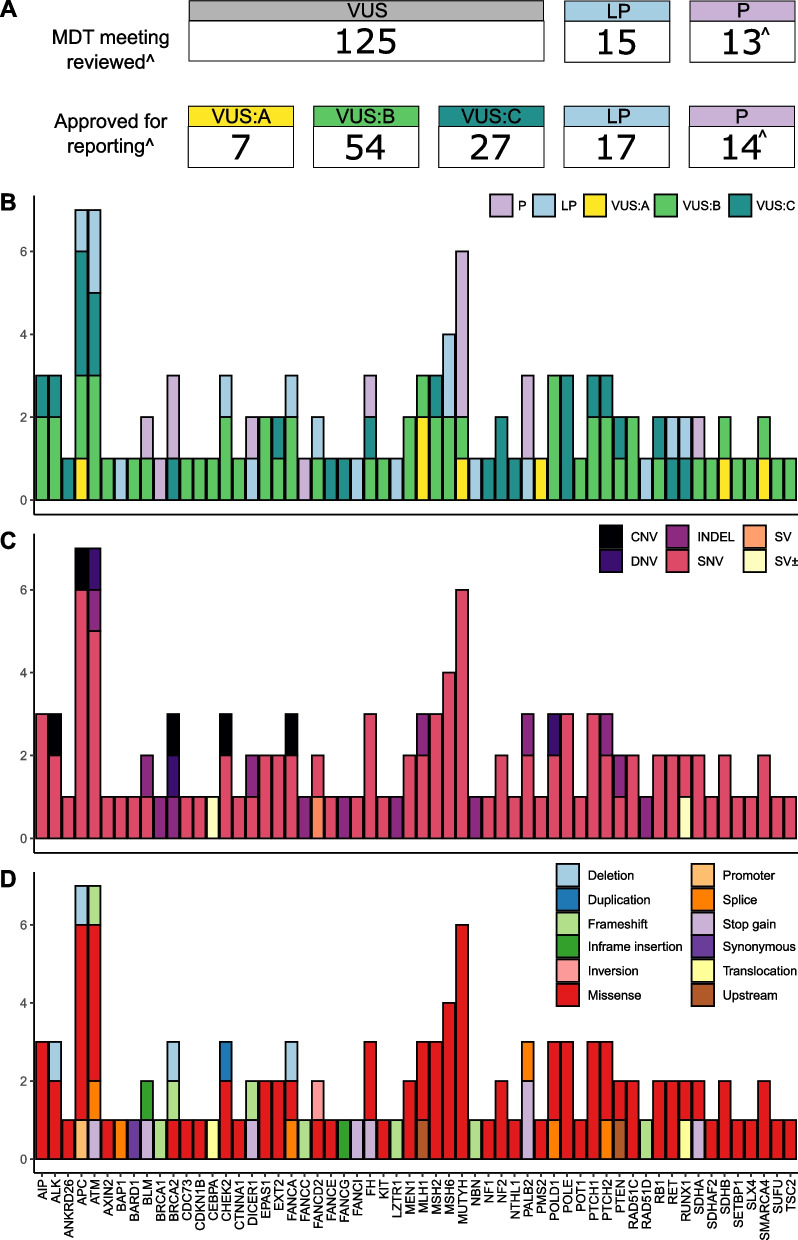Fig. 3.
Variants identified within index cases. A The number and classification of variants discussed at the MDT meetings and returned to the treating clinician after the MDT meeting. Classifications: LP—likely pathogenic; P—pathogenic; VUS—variant of uncertain significance; VUS:A—available evidence is highly suggestive that the VUS variant is disease-causing; VUS:B—available evidence is insufficient to classify the VUS variant as either disease-causing or benign; and VUS:C—available evidence is highly suggestive that the VUS variant is likely benign. ^Two pathogenic PALB2 variants known to be common within the Australian population were reported directly to the relevant Familial Cancer Centre without a formal MDT meeting. B Post-MDT meeting classification of returned variants. C Type of returned variants. Types: CNV—copy-number variant; DNV—dinucleotide substitution; INDEL—small insertion or deletion; SNV—single-nucleotide variant; SV—structural variant; SV ± —structural variant with somatic origin. D Molecular consequence of returned variants. For panels B through D the number and type of variants (y-axis) is shown for each gene (x-axis)

